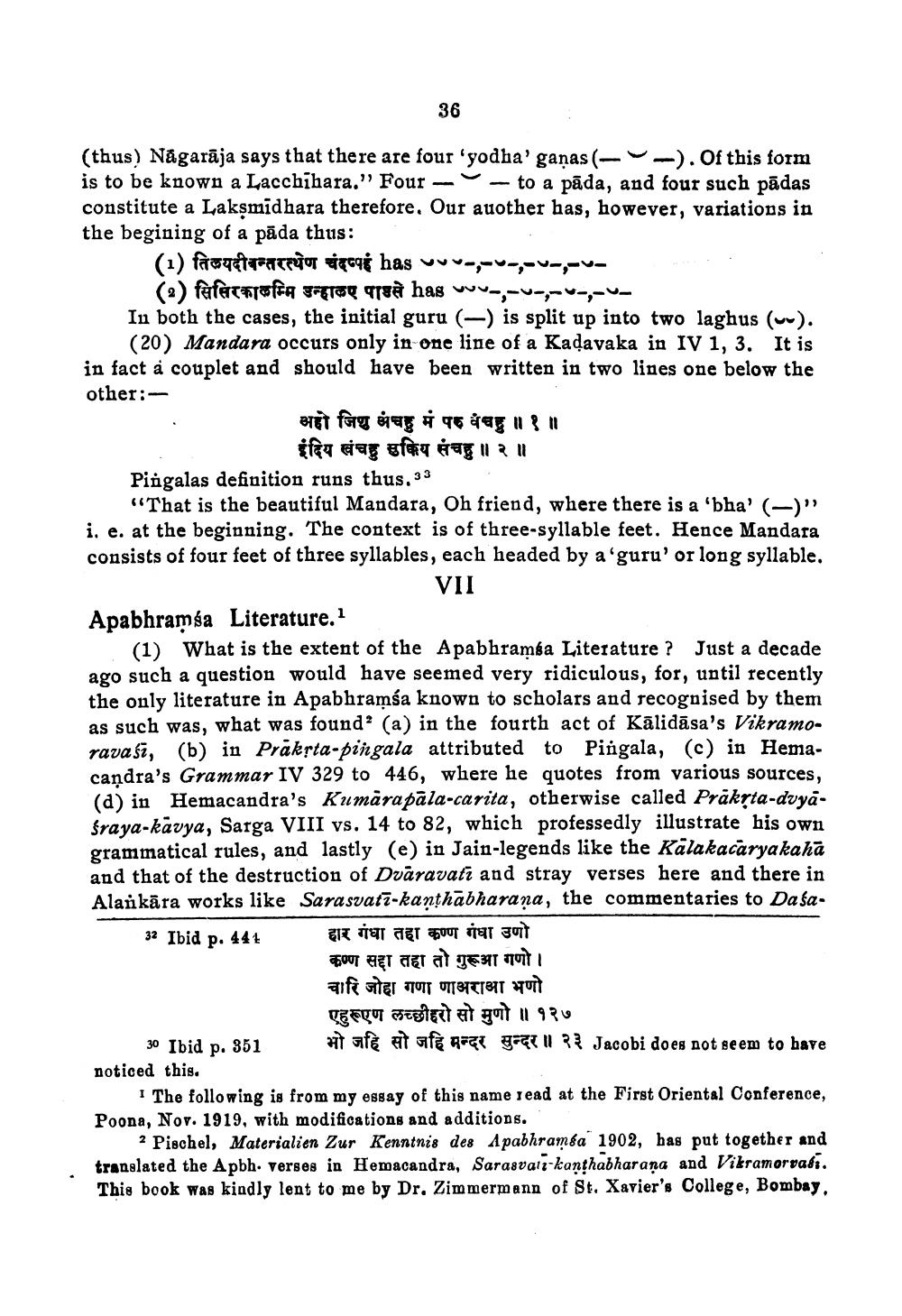________________
36
(thus) Någarāja says that there are four 'yodha' ganas (-- -). Of this form is to be known a Lacchihara." Four - - to a pāda, and four such pādas constitute a Laksmidhara therefore. Our auother has, however, variations in the begining of a pāda thus:
(1) facetrato 4096 has vuv---------
fefecaraffa sagte qe has wow-, --,---,-vIn both the cases, the initial guru (-) is split up into two laghus (w).
(20) Mandara occurs only in one line of a Kadavaka in IV 1, 3. It is in fact a couplet and should have been written in two lines one below the other:
अहो जिणु अंचहु मं पर वैचहु ॥१॥
इंदिय खंचहु सकिय संचहु ॥२॥ Pingalas definition runs thus. 33
"That is the beautiful Mandara, Oh friend, where there is a 'bha' (-)" i. e. at the beginning. The context is of three-syllable feet. Hence Mandara consists of four feet of three syllables, each headed by a'guru' or long syllable.
VII Apabhramba Literature."
(1) What is the extent of the Apabhramsa Literature ? Just a decade ago such a question would have seemed very ridiculous, for, until recently the only literature in Apabhramśa known to scholars and recognised by them as such was, what was found? (a) in the fourth act of Kālidāsa's Vikramorava śī, (b) in Prakrta-pingala attributed to Pingala, (c) in Hemacandra's Grammar IV 329 to 446, where he quotes from various sources, (a) in Hemacandra's Kumāra pāla-carita, otherwise called Präkrta-dvya śraya-kavya, Sarga VIII vs. 14 to 82, which professedly illustrate his own grammatical rules, and lastly (e) in Jain-legends like the Kälakacaryakaha and that of the destruction of Dvaravati and stray verses here and there in Alankāra works like Sarasvatī-kanthabharaṇa, the commentaries to Dasa32 Ibid p. 447
हार गंधा तहा कण्ण गंधा उणो कण्ण सद्दा तहा तो गुरूआ गणो। चारि जोहा गणा णाअराआ भणो
एहुरूएण लच्छीहरो सो मुणो ॥१२७ 30 Ibid p. 351
afè at afg RFI got II 33 Jacobi does not seem to have noticed this.
The following is from my essay of this name read at the First Oriental Conference, Poona, Nov. 1919, with modifications and additions.
2 Pischel, Materialien Zur Kenntnis des Apabhramba 1902, has put together and translated the Apbh. verses in Hemacandra, Sarasvali-kanthabharana and Vikramoroafi. This book was kindly lent to me by Dr, Zimmermann of St. Xavier's College, Bombay,




